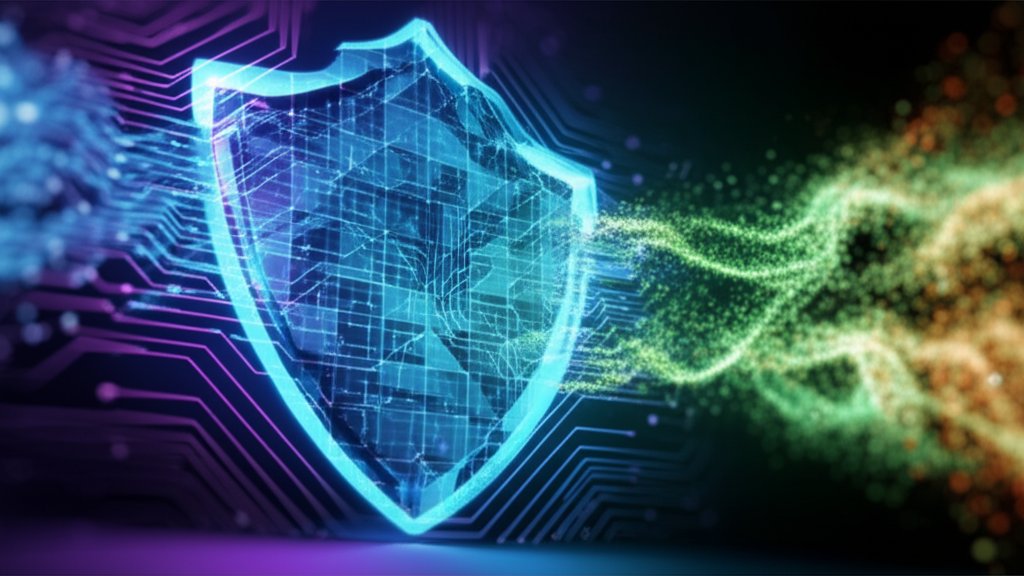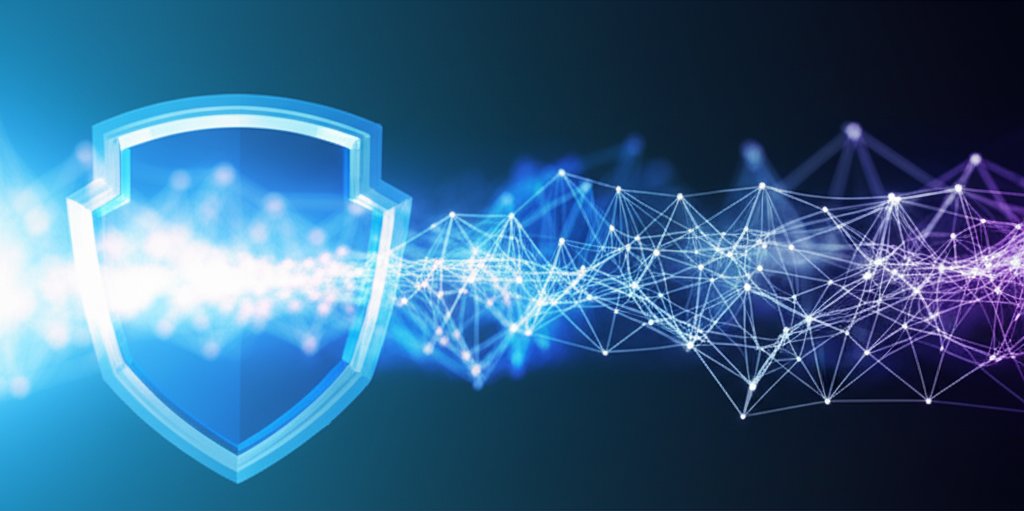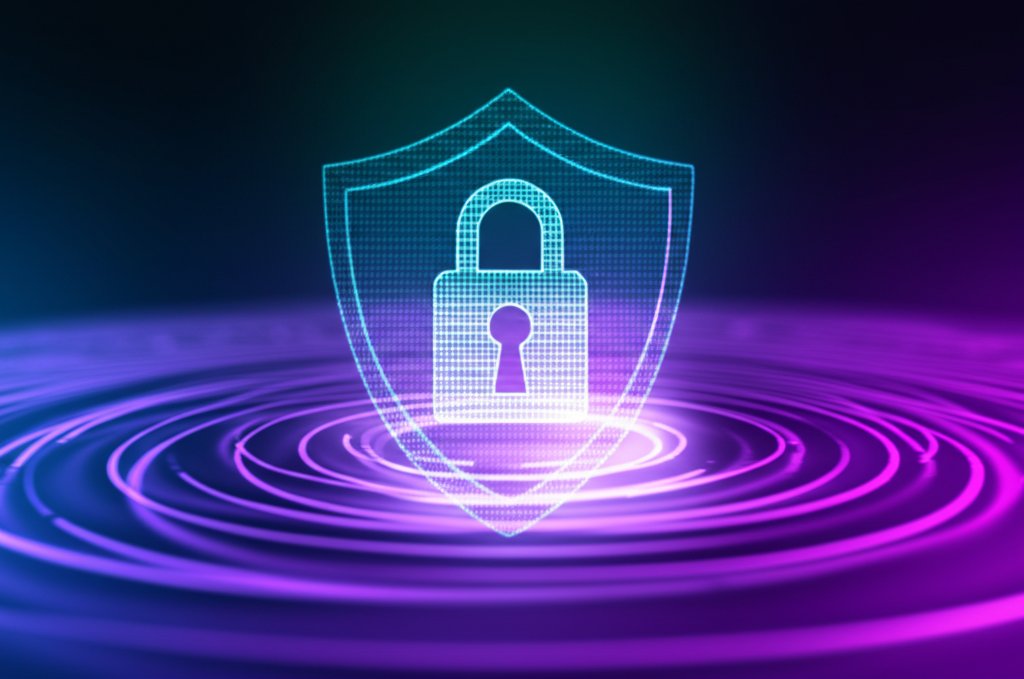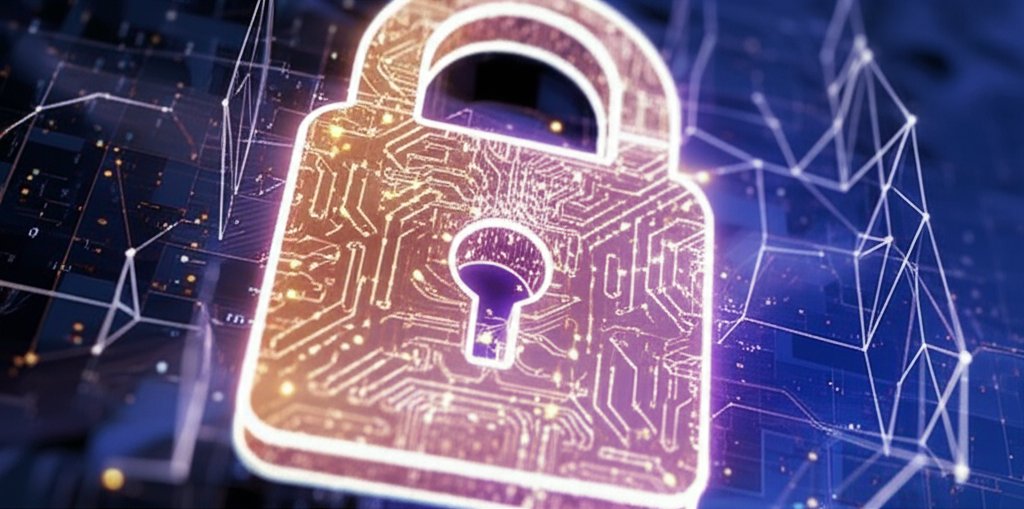The digital world moves fast, and with every leap forward, new challenges emerge for our cybersecurity. For years, we’ve relied on passwords, those strings of characters we constantly create, forget, and reset. But what if I told you that not only are passwords a weak link against today’s pervasive threats, but a looming technological revolution – quantum computing – threatens to render much of our current encryption useless? It’s a serious thought, and one we must address proactively.
As a security professional, it’s my job to translate these complex technical threats into understandable risks and, more importantly, into practical solutions that empower you to take control of your digital security. We’re not talking about science fiction anymore; we’re talking about the urgent need to future-proof our digital lives. And that’s where passwordless authentication steps in, not merely as a convenience, but as a crucial, quantum-resilient defense for the modern era. Many believe it represents the future of identity management.
Future-Proof Your Login: How Passwordless Authentication Secures Your Identity Post-Quantum
The Password Problem: Why Our Current Logins Aren’t Enough (Even Without Quantum Threats)
Let’s be honest, we all know the drill. You sign up for a new service, and suddenly you’re faced with demands for a password that’s long, complex, unique, and impossible to guess. We try to meet the criteria, but human nature often gets the better of us. We reuse passwords, opt for simpler combinations, or jot them down somewhere insecure. This isn’t just an inconvenience; it’s a massive and systemic security vulnerability that puts everyone at risk, often leading to critical email security mistakes.
The inherent weaknesses of passwords:
- Easy to forget, leading to reuse or simple passwords: When you’re managing dozens, if not hundreds, of online accounts, it’s easy to fall into the trap of using the same password across multiple services. A single data breach on one site can then compromise your entire digital life, giving attackers the keys to your email, banking, and social media.
- Vulnerable to sophisticated attacks: Attackers are constantly evolving their methods. They send convincing phishing emails to trick you into revealing your login credentials. They use automated programs to guess passwords (brute-force attacks) or take leaked password lists from one breach and try them on other sites (credential stuffing), often with alarming success rates.
- Often stored insecurely by websites (data breaches): Even if you choose a perfect password, its security ultimately depends on how the website stores and protects it. If their systems are breached, your password (or its hashed equivalent) could be exposed, regardless of your personal efforts.
How Multi-Factor Authentication (MFA) helps, but isn’t a silver bullet:
Multi-Factor Authentication (MFA) has been a significant step forward, and it’s something every security-conscious individual should enable. By requiring a second verification method – like a code from your phone or a fingerprint – it adds a crucial layer of defense. It’s definitely better than just a password. However, most MFA implementations still rely on a password as the first factor. If that password is stolen, compromised, or phished, the attacker still has a potential entry point, even if they have to work a bit harder for the second factor. We’re continually improving authentication, but what if the very foundation of digital security is about to shift?
Understanding the Quantum Threat: Why Our Digital Security is at Risk
The idea of “quantum computers” might sound like something out of a sci-fi movie, but it’s a very real, and rapidly approaching, challenge to our current cybersecurity infrastructure. This isn’t about replacing your laptop; it’s about a fundamentally different way of processing information that excels at solving specific, incredibly complex mathematical problems our traditional computers can’t touch.
What is quantum computing (simplified for everyday users)?
Think of it this way: traditional computers use “bits” that can be either a 0 or a 1. Quantum computers use “qubits” that can be 0, 1, or both simultaneously. This phenomenon, called “superposition,” allows them to process vast amounts of information and explore many possibilities all at once, leading to exponential speedups for certain types of calculations that are currently intractable for even the most powerful supercomputers.
How quantum computers can break current encryption:
The encryption that keeps your online banking, secure communications, and digital identity safe today relies on mathematical problems that are incredibly difficult for classical computers to solve. For example:
- Shor’s algorithm: This is the most significant quantum threat to our current public-key cryptography. It’s a quantum algorithm that can efficiently factor large numbers into their prime components. Why does this matter? Because public-key cryptography (like RSA and ECC), which underpins secure communications, digital signatures, and key exchanges (essentially, how your browser securely connects to a website), relies on the presumed difficulty of this very problem. A sufficiently powerful quantum computer running Shor’s algorithm could break these in a flash, rendering much of our current internet security useless.
- Grover’s algorithm: While less of a direct break, Grover’s algorithm can significantly speed up brute-force attacks against symmetric encryption (like AES, which protects the bulk of your data once a secure connection is established). It effectively halves the key strength, meaning a 256-bit key would effectively offer the security of a 128-bit key against a quantum attacker. This means current symmetric encryption would need to double its key length to maintain the same level of security in a post-quantum world.
The takeaway? The very algorithms protecting your sensitive data today are vulnerable to future quantum machines, and we cannot afford to wait for that future to arrive before taking action.
The “Harvest Now, Decrypt Later” Danger:
This isn’t a future problem we can ignore until quantum computers are readily available. Adversaries today, from nation-states to sophisticated criminal groups, are already aware of this looming threat. They could be collecting vast amounts of encrypted data – your sensitive emails, financial transactions, medical records, intellectual property – with the intent to store it. Once a sufficiently powerful quantum computer is built, they could then decrypt all that harvested data. This means data that needs long-term confidentiality, say for 10-20 years, is already at risk today. This long-term risk demands immediate action and is a critical reason why we can’t afford to wait.
Passwordless Authentication: A Stronger Foundation for a Quantum World
This might sound daunting, but there’s a clear path forward, and it begins with a fundamental shift away from passwords. Passwordless authentication isn’t just about convenience; it’s about fundamentally rethinking how we prove our identity online in a way that is inherently more secure, resistant to common attack vectors, and critically, more resilient to emerging quantum threats.
What is passwordless authentication?
Simply put, passwordless authentication moves beyond “something you know” (your password) to “something you have” (like your phone or a dedicated security key) or “something you are” (biometrics like your fingerprint or face scan). To understand what makes for a truly secure passwordless system, it’s essential to look beyond the surface. Instead of typing a password, you might approve a login request on your mobile device, tap a physical security key, or use your device’s biometric scanner. It removes the password as the central point of failure entirely. There is no password to steal, phish, forget, or reuse across sites, significantly reducing your attack surface.
How it naturally aligns with post-quantum security:
Many modern passwordless methods, particularly those built on open standards like FIDO2 (Fast Identity Online) and embodied in Passkeys, are designed with a concept called “crypto-agility” in mind. This means they are built to be easily updated to use new, stronger cryptographic algorithms as technology evolves and threats change. As the National Institute of Standards and Technology (NIST) standardizes new Post-Quantum Cryptography (PQC) algorithms, these flexible passwordless systems can more readily adopt them. This is a stark contrast to older, rigid password-based systems that are much harder and more costly to update, often requiring complete overhauls.
Quantum-Resistant Passwordless Solutions: What to Look For
When we talk about quantum-resistant passwordless solutions, we’re discussing methods that not only eliminate the password but also integrate, or are designed to integrate, Post-Quantum Cryptography (PQC) to defend against quantum attacks. Here’s what you should be paying attention to:
Passkeys and FIDO2: The Gold Standard for the Future
Passkeys are the current leading practical implementation of passwordless authentication, built on the robust FIDO2 standard and WebAuthn. They utilize unique cryptographic key pairs stored securely on your device for each account. When you log in, your device generates a unique cryptographic signature, which the service then cryptographically verifies. This process is inherently phishing-resistant because you’re not typing a password that can be intercepted or tricked. More importantly, Passkeys are designed for crypto-agility. NIST is actively standardizing PQC algorithms (like CRYSTALS-Kyber for key exchange and CRYSTALS-Dilithium for digital signatures) to make these systems quantum-safe. Major players like Google, Apple, and Microsoft are already driving Passkey adoption, making them a practical, user-friendly, and future-ready choice for securing your identity.
Biometric Authentication (with secure backend):
Your fingerprint or face scan isn’t directly vulnerable to quantum attacks. The actual biometric data stays securely on your device, used only to unlock a cryptographic key or confirm your physical presence. However, the system securing the biometric template and, crucially, the communication between your device and the service, needs to be PQC-hardened. When implemented correctly, where the biometric simply unlocks a secure cryptographic key (like a Passkey), it offers excellent security. Many modern devices use dedicated secure elements to protect biometric data, further reducing network-based attack surfaces and making it a powerful, intuitive passwordless method.
Hardware Security Keys (e.g., YubiKeys):
Physical security keys, like those from Yubico’s YubiKey line, are tiny, robust devices that store cryptographic keys securely. They offer an extremely strong form of multi-factor or passwordless authentication. Like Passkeys, these devices can be updated to incorporate new PQC algorithms as they are standardized, providing a tangible, quantum-resistant layer of security for your most critical online accounts. They are particularly valuable for high-value targets or professionals managing sensitive data.
Other Passwordless Examples:
- Magic Links: While less robust against quantum threats directly (as the link itself isn’t quantum-hardened), they eliminate passwords and can be combined with PQC-hardened backend systems. They often involve a unique, time-sensitive link sent to your email, which you click to log in.
- One-Time Passwords (OTPs) via authenticator apps: Similar to MFA, these are time-based codes generated by an app. They are an improvement over SMS-based OTPs, but still generally rely on a password as the first factor. The app itself can’t be “quantum-hardened” but the underlying protocol *could* be.
Benefits for Everyday Users and Small Businesses
The move to passwordless authentication, especially when quantum-resistant technologies are adopted, offers a compelling array of benefits for individuals and organizations alike:
- Enhanced Security: This is the paramount advantage. You get significantly stronger protection against pervasive threats like phishing, brute-force attacks, and credential stuffing that exploit password weaknesses. Crucially, you also gain a robust defense against future quantum attacks that could compromise existing encryption, thereby reducing your risk of identity theft, financial fraud, and devastating data breaches.
- Simplicity and Convenience: Imagine never having to remember another complex, unique password again. With passwordless authentication, you log in using familiar device unlocks (biometrics, PIN) or by tapping a security key. It’s faster, easier, and eliminates password fatigue and the frustrating cycle of forgotten password resets.
- “Crypto-Agility”: As the quantum landscape evolves and NIST finalizes PQC standards, these modern systems are designed to adapt more easily to new, approved PQC algorithms. This means your security can keep pace with emerging threats without requiring a complete overhaul of your login methods or a significant burden on users.
- Reduced IT Burden (for small businesses): For small businesses, password resets are a huge, costly time sink for IT staff. Passwordless authentication drastically reduces these requests and the risk of credential-based breaches, freeing up valuable IT resources and strengthening overall security posture, allowing staff to focus on strategic initiatives rather than reactive support.
Taking Action Now: Steps Towards a Post-Quantum Passwordless Future
The quantum threat is real, but it’s not a reason for panic; it’s a clear call to action. You don’t have to wait for the future; you can start preparing and protecting your digital life today.
Start Adopting Passwordless Where Available:
- Enable Passkeys on Supporting Platforms: Major tech companies like Google, Apple, and Microsoft are leading the charge. Look for options to enable passkeys for your personal accounts. It’s often as simple as a few clicks in your security settings, transforming your login experience into something both easier and more secure.
- Use FIDO2 Security Keys for Critical Accounts: For your most sensitive accounts (email, banking, cloud storage, password managers), invest in a hardware security key (e.g., a YubiKey). They offer top-tier, phishing-resistant protection and are often among the first to support quantum-resistant updates, providing a strong, physical layer of security.
Advocate for PQC Adoption:
As a consumer or business owner, let your vendors and service providers know that post-quantum security is important to you. Encourage them to integrate NIST-approved PQC algorithms into their systems, especially for authentication and data encryption. Your demand helps drive industry-wide adoption.
Strengthen Current Password Practices (as a bridge):
While we transition to a passwordless world, don’t abandon good password hygiene for accounts that still require them:
- Use Strong, Unique Passwords: For every remaining account, use a unique, complex password that combines uppercase and lowercase letters, numbers, and symbols.
- Leverage Password Managers: A reputable password manager (e.g., 1Password, Dashlane, Bitwarden) can generate and securely store these complex passwords for you, eliminating the need to remember them and making strong password usage effortless.
- Ensure MFA is Enabled Everywhere: For any account not yet passwordless, make sure you have MFA enabled. It’s your strongest defense against password-based attacks and a critical layer of protection.
Stay Informed:
The world of cybersecurity and quantum computing is constantly evolving. Keep an eye on developments in PQC and passwordless technology. Reliable security blogs, government advisories (like NIST’s updates), and reputable news sources can help you stay ahead of the curve and make informed decisions about your digital security.
The Road Ahead: A Continuously Evolving Landscape
The journey to a fully quantum-resistant digital world won’t happen overnight, but the groundwork is being laid, and progress is accelerating:
- Ongoing research and standardization: NIST continues its crucial work on evaluating and standardizing new PQC algorithms. This rigorous process is vital for ensuring robust, long-term security that can withstand the computational power of future quantum machines.
- Hybrid approaches: During the transition period, we’ll likely see “hybrid” cryptographic approaches. These combine classical (current) and PQC algorithms, offering a fallback if the new PQC algorithms prove to have unforeseen weaknesses, while still providing quantum resistance today.
- Not just authentication: Remember, PQC’s impact extends far beyond just authentication. It will affect data encryption at rest and in transit, secure communications, digital signatures, and much more. Passwordless is a great starting point for identity, but the broader migration to quantum-safe cryptography will be a monumental effort across the entire digital infrastructure.
Securing your identity in the post-quantum era might sound like a challenge from a different century, but the solutions are already here, or rapidly approaching, including advanced concepts like decentralized identity. Proactive adoption of passwordless authentication, coupled with an understanding of quantum threats and the transition to PQC, isn’t just about convenience; it’s about safeguarding your digital life for the long term. Start with what’s available today, stay informed, and empower yourself with future-ready security choices. Your digital future depends on it.









